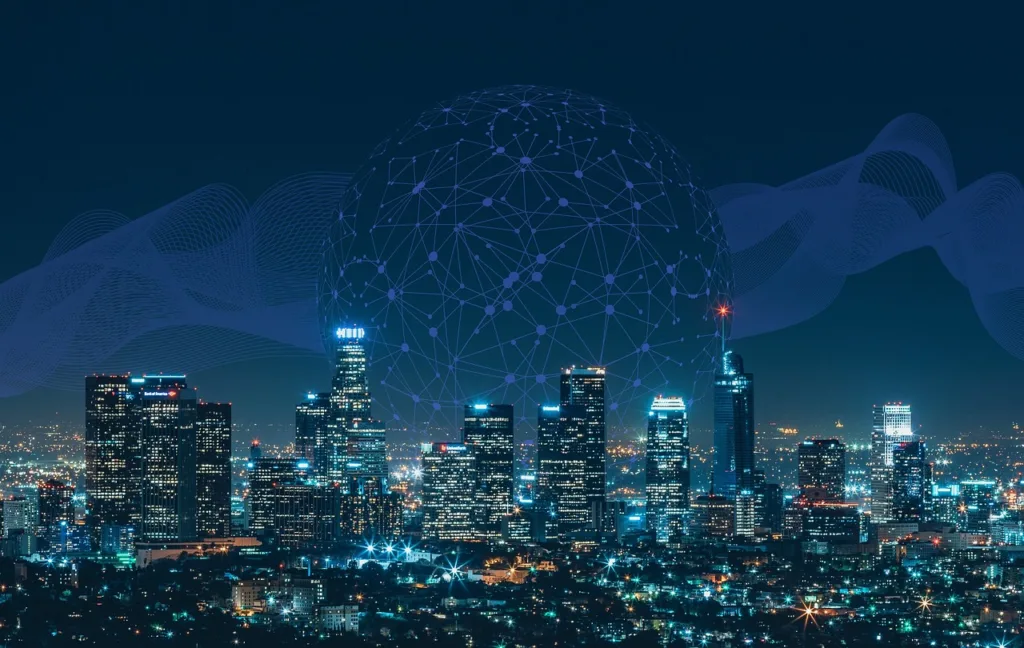
The rapid growth of urban populations is placing immense pressure on city infrastructure, creating new demands and challenges. In response, innovative technologies such as IoT (Internet of Things) and AI (Artificial Intelligence) are becoming important in shaping the future of cities. Smart cities, powered by these technologies, aim to improve the quality of life for residents, enhance environmental sustainability, and optimize city management. By integrating these tools with forward-thinking urban planning, we can create cities that are not only more efficient but also more livable for future generations.
The Foundation of Smart Cities: Urban Design and Community-Centric Planning
While technology is a driving force behind smart cities, their foundation lies in thoughtful urban design and community-focused planning. A smart city is not defined solely by its technology but by its commitment to creating environments that prioritize livability and inclusivity. The integration of efficient public spaces, pedestrian-friendly streets, and accessible green areas ensures that cities remain vibrant and sustainable. Smart cities incorporate elements such as bike lanes, well-designed public transport systems, and green rooftops to reduce the urban heat island effect and promote healthier living. These features foster a healthier lifestyle, reduce pollution, and contribute to the well-being of residents, addressing both human and environmental needs without relying exclusively on high-tech solutions.
Citizen Participation and Collaborative Governance
One of the cornerstones of a smart city is active citizen participation and collaborative governance. Engaging residents in the decision-making process through open forums, digital platforms, and community meetings enables cities to address real needs effectively. When citizens have a hand in shaping their urban environment, they create inclusive spaces and are more invested in their communities. This participatory approach helps foster a sense of belonging and unity, ensuring that development projects align with the diverse needs of urban populations. A truly smart city values people as much as it values technology, and this inclusive approach is key to creating sustainable, thriving urban spaces.
Understanding Smart Cities and Their Potential
At their core, smart cities are about the integration of digital technologies, such as IoT and AI, to gather, analyze, and apply data across urban systems and services. This technology-driven infrastructure allows for real-time insights and responsive decision-making, making cities more adaptive and efficient in meeting residents’ needs. By leveraging these technologies, cities can monitor pollution levels, optimize energy use, enhance transportation, and improve waste management. Leading cities like Singapore, Barcelona, and Amsterdam have already embraced these technologies to address urban challenges, and their success serves as a model for cities around the world to follow.

IoT’s Role in Transforming Urban Infrastructure
IoT plays an important role in connecting devices and systems within smart cities, creating a vast network of interconnected resources. Through this network, cities can monitor and control utilities, transportation, and public safety systems in real-time. For example, traffic lights equipped with IoT sensors can adjust based on real-time traffic flow, reducing congestion and fuel consumption. In buildings, smart meters enable efficient management of water and energy, as utilities can be monitored and adjusted remotely. Public safety is also greatly enhanced through IoT, with connected surveillance systems, emergency response devices, and predictive policing platforms all working together to improve security and reduce crime rates. By integrating these essential services, cities can improve efficiency, reduce environmental impact, and enhance the overall quality of life for residents.
AI in Smart City Planning and Management
AI complements IoT by transforming the data gathered from interconnected systems into actionable insights. In transportation, AI can optimize bus routes, reduce delays, and improve scheduling by analyzing commuter patterns and predicting traffic conditions. AI can also play an important role in energy management, with algorithms adjusting building energy use based on occupancy patterns, weather conditions, and demand. This leads to reduced energy waste and more cost-effective energy consumption. Similarly, AI-driven waste management systems can forecast waste volumes, optimize collection routes, and minimize the environmental footprint of waste disposal. By enhancing the management of these core services, AI helps create smarter, more sustainable cities.
Achieving Sustainability with IoT and AI
The potential of IoT and AI in achieving sustainability is one of their most significant contributions to smart cities. By optimizing resource use and minimizing waste, these technologies play a key role in reducing carbon emissions and supporting global climate goals. AI-powered energy grids, for example, can integrate renewable energy sources like solar and wind, optimizing their use based on real-time supply and demand. Smart water management systems can detect leaks early, conserving water and preventing waste. Together, IoT and AI help cities balance economic growth with environmental responsibility, allowing them to reduce their ecological footprint while maintaining a high quality of life for residents.

Challenges and Considerations
Despite the many benefits, the widespread implementation of IoT and AI in smart cities does come with its challenges. One of the primary concerns is data privacy. These technologies require vast amounts of personal and location-based data to function effectively, raising questions about the security and privacy of residents. To address this, cities must prioritize cybersecurity and establish robust data management protocols to protect individuals’ privacy.
Another challenge is the financial investment required to deploy these technologies on a large scale. The initial cost of implementing IoT and AI systems can be significant, and not all cities have the resources to support such changes. However, with clear policy frameworks, private-public partnerships, and incentives for sustainable technologies, cities can navigate these challenges and accelerate their transition to smart city infrastructure.
Looking to the Future
The potential of IoT and AI in building sustainable, efficient urban environments is immense. As these technologies continue to evolve, smart cities will become even more responsive, connected, and resilient. The future of urban living lies in how effectively cities can harness IoT and AI to serve the needs of their residents while also contributing to global sustainability efforts.
About Author
Manoj Punamiya, CEO of Royal India Corporation Ltd (RICL) and has been leading the company through a transformative phase, positioning it as one major player in India’s evolving real estate landscape. Under his leadership, RICL has not only achieved a significant financial recovery but is also laying the groundwork for sustainable growth and innovation.

